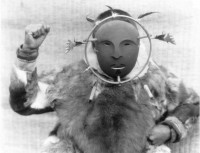 The world is embroiled in controversy over gender identity. Modern industrialized countries are slowly aligning laws and policies to reflect changing cultural attitudes; what once was hidden and forbidden is now openly visible and allowed. Traditional, less industrialized societies remain committed to laws and policies that continue to outlaw same sex relationships, and their criminalization generates severe penalties and punishment.
The world is embroiled in controversy over gender identity. Modern industrialized countries are slowly aligning laws and policies to reflect changing cultural attitudes; what once was hidden and forbidden is now openly visible and allowed. Traditional, less industrialized societies remain committed to laws and policies that continue to outlaw same sex relationships, and their criminalization generates severe penalties and punishment.
It’s tempting to see issues of gender identity as a thorny product of modernity but this is a narrow and mistaken view. As science has discovered the underlying biological mechanisms influencing gender identity and differentiation this knowledge is slowly confirming long-standing anthropological research documenting that variety in gender identification is as old as human culture itself.
As to the science; it’s now known that physical gender and brain gender development do not always take place simultaneously. Physical gender is fixed at six weeks after conception, but brain gender can take place considerably later. Thus biologists have shown that gender identification is not rigidly nor solely chromosome-determined; variation in brain gender identity is a natural outcome of both genetic and non-genetic factors.
Anthropologically, there is extensive evidence that gender identity variation has existed world-wide. In his “Historical Atlas of World Mythology”, the late Joseph Campbell carefully presents scholarship and field research documenting gender variation stretching in time from the late Paleolithic and Neolithic periods of human culture (20,000-30,000 years B.C.) to the near present. He cites the work of anthropologist Hermann Baumann, who cataloged 47 different tribes dispersed across every continent where transvestitism and physical sex change was prevalent within shamanic cultures.
The idea of a “primal bisexual divinity” differs greatly from the imposition of a rigid “male/female polarity” as presented by high-culture, monotheistic religions. Campbell states, “Mythologies based on the idea of a creative bisexual power that split into male and female first appear in documents from ancient Mesopotamia; and it was in areas proximal to that cultural matrix that ritualized transvestism, castration and similar practices first became identified with the rites of a Universal Goddess.” Eventually, these ritualistic practices spread worldwide, only to run into later conflict with high-culture, which largely extirpated and prohibited them. Such prohibition, predictably, pushed gender identity variation underground but did not and could not eliminate it.
Increased freedom of expression in our modern age combined with communications technology, which in large measure is “re-tribalizing” cultures along lines of affinity, now affords the opportunity to witness a re-surfacing of human sexual diversity. Undoubtedly, this transition will and has stimulated a resurgent conflict between those who support the emergence of freely expressed gender identity variation and those who don’t. The metaphor of “culture war” speaks to the deep-seated, oft-times buried storehouse of emotions connected to matters of sexuality and strict differentiation of male and female.
Worldwide, male-dominated society has strongly suppressed women and any feminine-infused expressions of power. In western countries have things changed, albeit slowly; women only got the right to vote in France in 1945. In Saudi Arabia, women still cannot vote and are stoned to death for adultery in Afghanistan. The extension of such attitudes to the LGBTQ community is therefore not surprising, but in time both science and human history will assert themselves decidedly in the direction of embracing the wide range of human diversity, both sexual and otherwise.





Be First to Comment